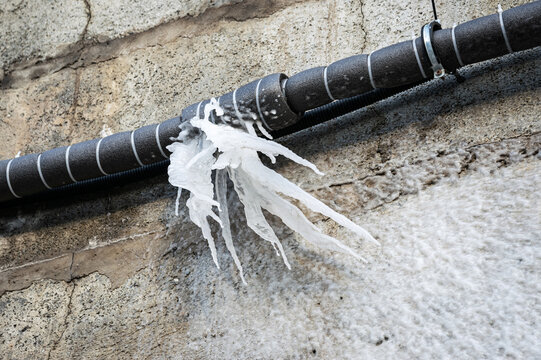Protecting Against Frozen Plumbing in Winter: Pro Tips
Protecting Against Frozen Plumbing in Winter: Pro Tips
Blog Article
Right here underneath you will discover lots of amazing insight in relation to How To Avoid Freezing Pipes.

Cold weather can wreak havoc on your pipes, especially by freezing pipes. Right here's exactly how to avoid it from taking place and what to do if it does.
Introduction
As temperatures drop, the risk of icy pipelines rises, possibly causing costly repairs and water damages. Comprehending how to stop frozen pipelines is critical for homeowners in chilly climates.
Avoidance Tips
Insulating at risk pipes
Cover pipelines in insulation sleeves or utilize warmth tape to safeguard them from freezing temperatures. Focus on pipelines in unheated or outside locations of the home.
Home heating strategies
Maintain indoor areas appropriately warmed, specifically locations with pipes. Open up cupboard doors to enable warm air to circulate around pipes under sinks.
How to recognize icy pipelines
Try to find reduced water flow from taps, unusual smells or sounds from pipes, and visible frost on revealed pipelines.
Long-Term Solutions
Structural adjustments
Take into consideration rerouting pipelines away from outside wall surfaces or unheated areas. Include additional insulation to attics, cellars, and crawl spaces.
Upgrading insulation
Buy top notch insulation for pipes, attic rooms, and walls. Correct insulation helps maintain constant temperatures and minimizes the risk of icy pipelines.
Safeguarding Exterior Pipes
Garden pipes and exterior taps
Detach and drain pipes yard hose pipes prior to winter season. Mount frost-proof spigots or cover outdoor taps with protected caps.
Recognizing Frozen Pipelines
What triggers pipelines to freeze?
Pipes ice up when exposed to temperature levels listed below 32 ° F (0 ° C) for extended periods. As water inside the pipelines ices up, it increases, putting pressure on the pipe walls and potentially triggering them to break.
Threats and problems
Icy pipelines can bring about supply of water interruptions, residential or commercial property damage, and expensive repair work. Burst pipes can flooding homes and create substantial architectural damage.
Signs of Frozen Pipes
Recognizing icy pipes early can prevent them from bursting.
What to Do If Your Pipelines Freeze
Immediate actions to take
If you think frozen pipelines, keep faucets open up to soothe pressure as the ice melts. Utilize a hairdryer or towels soaked in hot water to thaw pipelines slowly.
Final thought
Protecting against frozen pipelines requires positive actions and quick feedbacks. By comprehending the reasons, signs, and safety nets, homeowners can secure their pipes during winter.
5 Ways to Prevent Frozen Pipes
Drain Outdoor Faucets and Disconnect Hoses
First, close the shut-off valve that controls the flow of water in the pipe to your outdoor faucet. Then, head outside to disconnect and drain your hose and open the outdoor faucet to allow the water to completely drain out of the line. Turn off the faucet when done. Finally, head back to the shut-off valve and drain the remaining water inside the pipe into a bucket or container. Additionally, if you have a home irrigation system, you should consider hiring an expert to clear the system of water each year.
Insulate Pipes
One of the best and most cost-effective methods for preventing frozen water pipes is to wrap your pipes with insulation. This is especially important for areas in your home that aren’t exposed to heat, such as an attic. We suggest using foam sleeves, which can typically be found at your local hardware store.
Keep Heat Running at 65
Your pipes are located inside your walls, and the temperature there is much colder than the rest of the house. To prevent your pipes from freezing, The Insurance Information Institute suggests that you keep your home heated to at least 65 degrees, even when traveling. You may want to invest in smart devices that can keep an eye on the temperature in your home while you’re away.
Leave Water Dripping
Moving water — even a small trickle — can prevent ice from forming inside your pipes. When freezing temps are imminent, start a drip of water from all faucets that serve exposed pipes. Leaving a few faucets running will also help relieve pressure inside the pipes and help prevent a rupture if the water inside freezes.
Open Cupboard Doors
Warm your kitchen and bathroom pipes by opening cupboards and vanities. You should also leave your interior doors ajar to help warm air circulate evenly throughout your home.

I found that article about How To Avoid Freezing Pipes while doing a lookup on the web. Are you aware of someone else who is inquisitive about the subject? Take a moment to promote it. I treasure reading our article about 6 Ways to Prevent Frozen Pipes.
Click Here Report this page